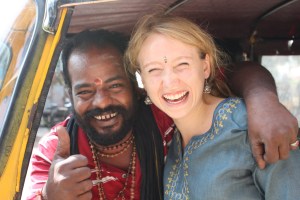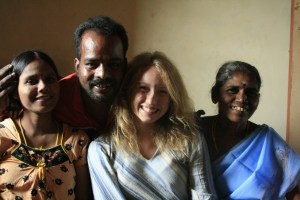When we find out we might be alone in thinking something, we tend to remember the sensation. Surprise, followed quickly by worry, or curiosity, or pride, can overshadow the actual topic of conversation. I remember one moment like this. I had just described to a friend how those unofficial, packed dirt trails that you find curling through every park are fascinating to me.
You see why, right? These trails are created by many people over many months if not years. The finished product looks intentional: there are clean lines between the path and the grass around it, the route confidently heads towards the place most people want to go, and it’s well maintained, routinely reinforced, sometimes in contrast to neglect, very close by, visible in some less popular park features. This is a collaboration, but the collaborators rarely see each other, generally don’t know each other, and never actually communicate about their shared project. It is an accident and unintended consequence of thousands of actions that this path gets made.
What struck me is how path makers are separated not by space but in time. When I walk down one of these paths I imagine all the people I’m following, and all those who will follow me. We influence each other, affect the steps others choose. Unseen, unknowingly, we transmit information across time, coordinating our efforts to produce an inviting little walkway. Membership in this secret, silent club tickles me. No one is aware of having joined or what their contribution was. Our members cannot be gathered by any imaginable technique or technology, because time moves only in the one direction, and the world soon forgets who made the first footfalls and where that person was headed. And without aiming to, we’ve created an informal institution, a monument to decentralized decision making. Dear reader, I give you: the well defined yet unsanctioned path, a whimsical and determined thing, fixture of parklands everywhere.
My unprepared attempt to communicate this and my wonder at it to a friend was halting, but after getting it out I saw immediately that my fascination wasn’t shared. Other people just don’t think like this, I realized, surprised. I was torn between feeling proud of how my clearly insightful observation separated me from the unwashed masses and being disappointed, like when a joke isn’t laughed at, or the personal anecdote you expected to be recognized as embodying something universal, isn’t. It was disappointing to find that the busy, complicated world I lived in was a lonely place. It’s not just paths in parks. I’m often paralyzed by visions of the countless roles we play, the endless connections and interactions between us, the infinite consequences of our smallest actions. I’m not infrequently dumbstruck with awe at the products of our undirected and unplanned efforts, overcome in public places with mute delight. I stare at the city around me like a caveman.
Although I never seriously believed that I was the only person with an active imagination and a ferocious curiosity about the world around me, I did feel separated from fellow awestruck path watchers by my inability to put my wonder into words, and therefore lonely. A path maker might feel the same way were one to become aware of his or her diffuse coworkers and wish to speak with them, if only to share introductions over a beer and pass around congratulations on a job well done. But while there’s no hope of traveling though time (except the usual way), there should be a way to overcome my less fundamental isolation. There must be others in the world with a passion for self organization and its power. Now just how do I meet one?
Podcasts. When it comes to emergent order, I recommend reading The Price of Everything by Russ Roberts, who I first heard as the host of the essential EconTalk and who also writes a great blog, Cafe Hayek. For more, and please trust me on this, it is never a bad idea to read Hayek himself. Discovering that there exists an entire academic discipline devoted to exploring the mechanisms, mediums, properties and consequences of our species’ constant creative interaction has been one of my life’s greatest pleasures. It turns out that not only am I not at all uniquely brilliant, but the men and women who have been thinking, writing, researching and debating about exchange, incentives, and externalities for centuries have so much to teach me that my learning will safely last my lifetime.
To complete this happy ending, I need to develop the ability to communicate my curiosity. A lifelong project to be sure, but one I want to start today. Writing, this past week, has engaged me terrifically, been welcome work of the kind my life recently has been sadly lacking. It’s hard, and for now, feels rewarding. My busy imagination is already telling me that if I really keep at it, by the time I’m sixty-four I might actually publish something valuable. I’m really looking forward to that.
Reading about writing, I ran across this lovely passage in Anne Lamott’s Bird by Bird:
I remember reading C.S. Lewis for the first time, Surprised by Joy, and how, looking inside himself, he found “a zoo of lusts, a bedlam of ambitions, a nursery of fears, a harem of fondled hatreds.” I felt elated and absolved. I had thought that the people one admired, the kind, smart people of the world, were not like that on the inside, were different from me…
The moments we discover we’re not alone, like the moments when we first fear that we are, get glued in our memories by adrenaline, and then stuck where we’re sure to see them, like favorite pictures on our wall. Remember this. We forget, of course. Like all important lessons in life, we have to learn it again and again. Fear of being the only one like you in the universe is, famously, universal.
Share your stories about the conversation where you discovered that you’re on your own. It’s a familiar beat: talking to a friend, the easy assumption that you’re on the same page is suddenly questioned. This tends to happen most frequently when the topic being discussed is certain superstitions, the status of a relationship, or Israel. The moment tends to be memorable. I can recall a half dozen conversations I’ve had that fit this description.
Alternately, share your stories about the time you suddenly no longer felt alone. Although it has taken me a thousand words to get around to it, the story I had in mind when I started this post falls into this category. Today I was listening to The Skeptic’s Guide to the Universe and they were discussing several recent articles in mainstream sources that are big wins for skepticism and evidence that an important campaign in Britain is having an impact. The mood was high. Then Rebecca said this, about the podcast’s audience:
There are 60,000 of you our there right now. I know that right now, like, you’re listening to this and it’s just you, riding the subway, but there are actually 60,000 of you…
The story of how I came to find the SGU, and organized skepticism, and how it felt and what it meant to me is another post entirely, if not a dozen. It’s quite something, discovering how powerful it is to name yourself, to share passions and fears, and to belong. It would be a large, heavy, dreadfully earnest story. Hearing Rebecca’s words this afternoon was different: the moment was delightful, simple, and deliciously specific.
I’ve often imagined that there are others who, like me, ride the subway with earbuds in not to drown out the crowd or zone out to music, but to learn about scientific breakthroughs, technological achievements, the latest paranormal claims, quackery, what is fact and what is, in fact, fiction. Looking around as I ride, however, it never seems like I’m sharing a subway car with one of them. Instead as I listen I feel like there’s an unfortunate chasm between me and my fellow riders, growing wider with every moment I absorb information which I seriously doubt they have, as I sure wouldn’t were I not standing there with the rogues in my ear. Our common ground is thin and our disagreements untowardly deep, my imaginary fellow passengers and I. It’s not a good feeling. Most people separate themselves from the city around them by simply ignoring it, distracting themselves, or through small harmless acts of rudeness, but here I am actually shoving a planet-sized ideological wedge between myself and all those around me. What a sad, bitter old man I will become!
In a species as numerous as ours, a club consisting of sixty thousand is not in the business of setting cultural norms or writing policy. But put sixty thousand people in a room and you’ve got yourself quite a party. A big thank you to Rebecca for a truly neat moment, when I allowed myself to imagine my friends and allies, in hundreds of different subway cars in dozens of cities across the world. I smiled, then, picturing us, we who are excited about the future, we who love and cherish “the Universe as it really is.” At once, we all hear “right now you’re listening to this and it’s just you, but” and look up, all thinking the same thing.
I know podcasts are not listened to simultaneously. I know my habit of inventing visuals to stand in for the intangible things I’m awed by can get more than a little silly. I’ve been known to picture the myriad cell phone conversations going on around me as long strings arcing through the air, attached at the other end to far away towns and other continents, wrapping around the world a dense, tangled ball of string. And ask me sometime about the make believe Kingsbridge Tofu Club. Still. Explaining what’s going on in my head makes me feel elated and absolved, and even if this never reaches the right person, I’m confident someone out there thinks the way I do.
Science is a great path making project, the greatest decentralized collaborative effort there will ever be, with partnerships spanning the globe and reaching across time, accumulating results step by step that shape our emerging understanding of reality. It is the undertaking of the human race, discovery, and no one is truly alone who understands that they belong to this great and curious species. I will never be a scientist, but I long to contribute something to the discussion, if only to stand to the side and remind people how beautiful it all is. I will talk science over dinner and over drinks, inviting more people to share in our collective accomplishments, reminding everyone, you need not be alone, and look at what we can do when we work together.



